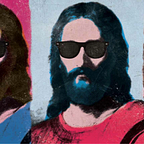Take a Hellish Pilgrimage through Dark Souls
Dark Souls is undoubtedly one of the most difficult video games ever created. In it, the player takes on the role of an undead locked away in an asylum to await the end of the world. Yet the player character is unique. He or she has been chosen to leave the undead asylum and take a pilgrimage to Lordran, the “land of ancient lords” (“Opening”). Such a vague goal sounds terse and uninteresting on paper, yet the pilgrimage route itself, as the player later discovers, is marked by obstacles of sadistic difficulty. Entering each new area in the game is like crawling into the next circle of Hell. Each is littered with vicious enemies with unexpected powers and is guarded by a terrifying boss (or bosses); the player usually ‘dies’ many times over the course of their attempts to understand enemies and to formulate and master the strategies required to beat them. Unpredictability and hellish difficulty mean that the game’s pilgrimage becomes reminiscent of Dante’s journey through Hell.
Death is an interesting aspect of the game in that you can’t really die – in this sense your character is immortal, echoing the immortal life promised by many religious teachings. Each time you’re defeated, you’re teleported back to the last checkpoint you saved at (referred to in the game as a bonfire), and you lose all of your unspent souls, the game’s currency, which you gain by defeating enemies and which you can use to build up your skills and buy new equipment. Each time you die you have the opportunity to go to the spot you died to regain your lost souls; however, if you die trying to retrieve them, they’re lost forever. This element of gaining souls and potentially losing them echoes the religious notion that souls are precious and may be eternally damned by certain mistakes. In this way, the game’s creators inflict a kind of karmic punishment on the player – souls are the game’s most valuable item, and losing them as a result of a foolish mistake is a major punishment that necessitates atonement. Of course, the ritual of atonement is observed by playing through that section of the game again until one’s lost souls are made up for.
The game punishes you with repetition, echoing the curse the Greek gods placed on Sisyphus, who must eternally roll a boulder up a mountain only to have it roll back down once he’s reached the top. In this way his efforts are futile, and Dark Souls is a game that easily inflicts on the player a sense of futility, a curse which can only be broken by determination and a willingness to learn from one’s mistakes.
At its core, the game’s world is built on the division between “Light and Dark,” which resulted from the disparity Fire caused when it entered the world.
The dualism of Light and Dark is an element common to many religious and mythological traditions, and might even be an archetype common among all people. Dark is said to represent “blindness, night, sleep, cold, gloom, despair, lostness, chaos, death, danger and yearning for the dawn. It is a striking image of the human condition”; meanwhile, Light represents the antidote to all of the above conditions: where Dark negates, Light strengthens, enlivens, and gives hope (Borg). Some of the game’s characters even worship the Light as a deity: Solaire, a ‘Warrior of Sunlight,’ speaks of the sun as “a wondrous body. Like a magnificent father! If only I could be so grossly incandescent!” (Solaire of Astora). Much of the game focuses on the struggle between those who want to continue the ‘Age of Fire’ and those who want to plunge the world into darkness, thus echoing the archetypal struggle between Light and Dark and all that these concepts are associated with. Perhaps the game’s difficulty is meant to reflect the seriousness of these religious themes and archetypes and the seemingly cosmic struggle to which they refer.
In Abrahamic mythology, Light and Dark were at the beginning of creation, signalling the importance of this dichotomy to Judaism, Christianity, and Islam (“Genesis 1:4”). “Darkness which may be felt” was the second to last plague in Egypt as described in Exodus (Exodus 10:21) and darkness is described in Matthew as a place of “weeping and gnashing of teeth” (Matthew 8:12) (“Darkness”). Dark Souls’ plot echoes the struggle against darkness in many ways, from referring to safe areas as ‘bonfires,’ highlighting the player’s need to ‘kindle’ them to gain more strength, and through the gods’ wish to ‘Link the Fire’ and thereby continue the present age of Light. This is interesting as it echoes the common sentiment that light represents good while dark represents evil, yet it is equally interesting that the game leaves up to the player the choice of whether to help the gods, resist them, or ignore them altogether.
Works Cited
Borg, Marcus. “The Light in the Darkness.” The Light in the Darkness. Religion Online, n.d. Web. 08 Nov. 2014.
“Darkness.” Wikipedia. Wikimedia Foundation, n.d. Web. 08 Nov. 2014.
“Exodus 10:21.” Bible Hub. N.p., n.d. Web. 08 Nov. 2014.
“Genesis 1:4.” Bible Hub. N.p., n.d. Web. 08 Nov. 2014.
“Matthew 8:12.” Bible Hub. N.p., n.d. Web. 08 Nov. 2014.
“Opening.” Dark Souls Wiki. Wikia, n.d. Web. 08 Nov. 2014.
“Solaire of Astora.” Dark Souls Wiki. Wikia, n.d. Web. 08 Nov. 2014.
